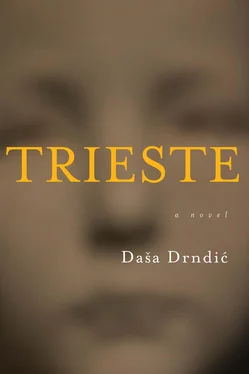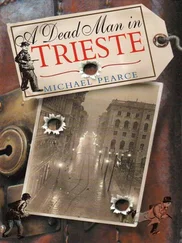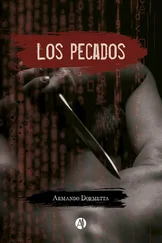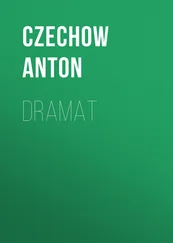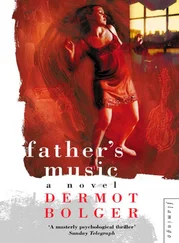Ernest Zierke, S.S.-Unterscharführer, born in 1905. Eighth-grade education. Worker in sawmill. Carpenter and locksmith. Member of National Socialist Workers Party, 1930. Nurse at Grafeneck, Hadamar and Sonnenstein. 1941–42 in Russia, 1942–43 at Belzec and Sobibor. Supervises escorting of Jews to gas chambers. Takes part in execution of last camp inmates as Belzec and Sobibor are closed. At San Sabba, December 1943. Acquitted at all trials due to poor health.
Karl Schluch, S.S.-Unterscharführer, born in 1905 in Lauenburg. Part of T4 programme from 1940 on. Guard. As with Unverhau, escorts victims to gas chambers and supervises cremation. Grafeneck, Hadamar, Russia, Belzec, Sobibor, Trieste — San Sabba — Aktion R. Acquitted at all trials from 1948 to 1965. Works after war as agricultural worker, construction worker, nurse.
In Belzec and Sobibor I supervised the disembarkation of the Jews from the freight carriages via the ramp. During disembarkation, Wirth told the Jews they had come there for transfer, that they would soon be travelling on further, but that they should first go to the baths and be disinfected. It was my job to calm the Jews. After they had stripped naked, I would show them the way to the gas chambers. Yes, I saw all the gas chambers. The ones in Belzec were 4 x 8 metres. They looked cheery, not a bit alarming. The doors were yellow or grey, I can’t remember. The walls were painted with oil paint. In any case, the floors and walls were easy to wash. I think there were showers on the ceiling.
I believe the Jews were convinced that they really were going to the baths. After they entered the gas chambers, Hackenholt would personally close the doors and then switch on the gas supply. Five or seven minutes later, someone would look through the small window into the gas chamber to verify whether all inside were dead. Only then were the outside doors opened and the gas chambers ventilated, after which a Jewish working group under the command of their kapo entered and removed the bodies. I supervised all this. The Jews inside the gas chambers were so densely packed that they did not die on the floor but one on top of another, heaped in disorder, some of them kneeling, some of them standing, they were covered in spittle, urine and shit, their lips and the tips of their noses were bluish, some of them had open eyes. The bodies were dragged out of the gas chambers and inspected by a dentist, who removed the rings and gold teeth. Then the corpses were thrown into a big pit. Both Wirth and Oberhauser took part in these operations.
Willi Mentz, S.S.-Unterscharführer, born in 1904. Dairy farmer. Works in 1940 on farm of Grafeneck euthanasia centre, tending to herds of cows and pigs, but in his free time participates in gassings. Later, at Hadamar, he gardens, waters the flowers and cuts the grass, and also, when free, assists in killing the mentally ill. From 1942–43 likes to drink beer in the shade at Treblinka, in the open makeshift café at the entrance to the little zoo that he maintains. After Sobibor, transferred in 1944 to San Sabba concentration camp, tasked with killing partisan fighters and Italian Jews. Passionate amateur photographer, goes on outings with Kurt Franz in and around Gorizia. (And for Kaiserfleisch at the Trattoria Leon d’Oro on Via Codelli during the spring of 1944, when he wipes his mouth on his sleeve instead of using a serviette, surprising Haya.)
At Treblinka, under Wirth’s command, Mentz lines up inmates along the edge of a pit, then shoots them in the back of the head. At Treblinka nicknamed “Frankenstein”. At the S.S. garrison at Treblinka only Mentz and Kurt Franz know how to ride, so they ride through the nearby woods and enjoy the fresh air. While they ride around the camp compound, Mentz enjoys shooting at Jews who serve as live targets, so he shoots and shoots and shoots. This earns him another nickname: “Gunman”. Sentenced to life imprisonment.
When I arrived at Treblinka, everything was in chaos. There weren’t enough gas chambers. Afterwards we built new ones, five or six more spacious and attractive chambers. If the little chambers had accommodated between eighty and one hundred people, the larger ones could hold at least twice as many.
Otto Horn, S.S.-Untersharführer (sergeant), born in 1903 near Leipzig. Nurse. Member of Nazi Party from 1937. Sent in 1941 to Sonnenstein as member of T4 Programme, and in October 1942 to Treblinka where he supervises the Grubenkommando, whose task it is to cover piles of bodies with sand and chloride of lime. At Treblinka had reputation of a decent man who does no-one harm. Leaves Treblinka after rebellion, simulating illness. In January dispatched to Trieste, but refuses to comply and goes home. Acquitted at Düsseldorf trial in 1965.
Name?
Otto Richard Horn.
Living in?
Berlin.
Date of birth?
14 December, 1903.
How old are you?
I’m dead.
What was Treblinka?
A camp. A death camp. They gassed people there.
Who did you report to upon arrival at Treblinka?
The deputy commander, Kurt Franz. He sent me to the Upper Camp, the Totenlager.
What tasks were handled at the Upper Camp?
Unloading trains and undressing.
Whom?
Mainly Jews.
Is that all that went on at the Upper Camp?
No. People were gassed and their corpses were burned.
Did they gas men only?
No. Men and women.
And children?
And children.
Who was the commander of the Upper Camp?
Matthes.
And for all of Treblinka?
Stangl.
Aside from the Germans and Ukrainians, were there prisoners at the Upper Camp?
There were. About two hundred prisoners worked at the Upper Camp. Jews.
What did they do?
They moved the corpses to the pits and burned them.
Where did they move the corpses from?
From the gas chambers.
Were there female prisoners at the Upper Camp?
Yes. They worked in the laundry. Six of them.
Do you remember the names of these women?
No. But one of them testified against me at the Düsseldorf trial in 1965.
Mr Horn, how long did it take to gas a person?
About an hour. After that the chambers were opened.
And then?
Then the corpses were taken to the pit and burned there.
What kind of gas was used at Treblinka?
I don’t know. I think that some motors produced the gas.
Mr Horn, you knew that the euthanasia programme meant killing children as well, did you not?
No, I didn’t know that.
But you were present at Treblinka when they gassed children.
Yes. They killed them all — children, women, men.
And you saw murdered children?
Yes.
Where were you standing when you saw the dead children?
At the pits.
You are accused of the murder of thousands of Jews, is that right?
Yes, yes.
And some Jews came to the trial and testified against you, is that right?
Yes, but they couldn’t prove anything.
What was the final verdict?
I was acquitted of all charges and declared innocent.
Completely innocent?
Absolutely. Completely.
Heinrich Matthes, S.S.-Oberscharführer. Born in 1902 in Wermsdorf, near Leipzig. Trained as tailor, later pre-qualifies as nurse. Works in psychiatric institutions throughout Germany, which makes him suitable for inclusion in T4 programme. Amateur photographer. As of 1934 an S.A., member of Nazi Party from 1937. Supervises work of gas chambers at Treblinka from 1942–43. Exceptionally pedantic and jumpy, quick on the draw. Transferred to Sobibor, then Trieste in early 1944, where he works as a policeman and guard at San Sabba. Sentenced to life imprisonment in 1965 for crimes committed at Treblinka.
Читать дальше
